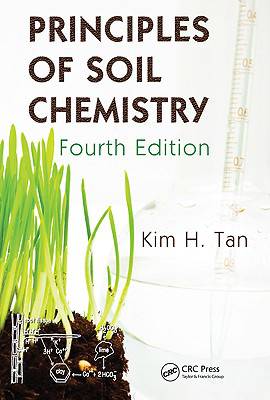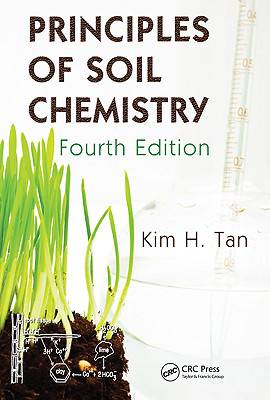
- Retrait gratuit dans votre magasin Club
- 7.000.000 titres dans notre catalogue
- Payer en toute sécurité
- Toujours un magasin près de chez vous
- Retrait gratuit dans votre magasin Club
- 7.000.000 titres dans notre catalogue
- Payer en toute sécurité
- Toujours un magasin près de chez vous
Description
Learn the secrets of soil chemistry and its role in agriculture and the environment. Examine the fundamental laws of soil chemistry, how they affect dissolution, cation and anion exchange, and other reactions. Explore how water can form water-bridges and hydrogen bonding, the most common forces in adsorption, chelation, and more. Discover how electrical charges develop in soils creating electrochemical potentials forcing ions to move into the plant body through barriers such as root membranes, nourishing crops and plants. You can do all this and more with Principles of Soil Chemistry, Fourth Edition.
Since the first edition published in 1982, this resource has made a name for itself as a textbook for upper level undergraduates and as a handy reference for professionals and scientists. This fourth edition reexamines the entire reach of soil chemistry while maintaining the clear, concise style that made previous editions so user-friendly. By completely revising, updating, and incorporating a decade's worth of new information, author Kim Tan has made this edition an entirely new and better book.
See what's new in the Fourth Edition
- Reexamines atoms as the smallest particle that will enter into chemical reactions by probing new advances testifying the presence of subatomic particles and concepts such as string theory
- Underscores oxygen as the key element in soil air and atmosphere for life on earth
- Reevaluates the idea of transformation of orthoclase into albite by simple cation exchange reactions as misleading and bending scientific concepts of ion exchange over the limit of truth
- Examines the role of fertilizers, sulfur, pyrite, acid rain, and nitrogen fixation in soil acidity, underscoring the controversial effect of nitrification on increasing soil acidity over time
- Addresses the old and new approaches to humic acids by comparing the traditional operational concept against the currently proposed supramolecular and pseudomicellar concept
- Proposes soil organics, such as nucleic acids of DNA and others, to also adsorb cation ions held as diffusive ion clouds around the polymers
Tan explains, in easy and simple language, the chemical make-up of the four soil constituents, their chemical reactions and interactions in soils as governed by basic chemical laws, and their importance in agriculture, industry, and the environment. He differentiates soil chemistry from geochemistry and physical chemistry. Containing more than 200 equations, 123 figures, and 38 tables, this popular text and resource supplies a comprehensive treatment of soil chemistry that builds a foundation for work in environmental pollution, organic and inorganic soil contamination, and potential ecological health and environmental health risks.
Spécifications
Parties prenantes
- Auteur(s) :
- Editeur:
Contenu
- Nombre de pages :
- 390
- Langue:
- Anglais
- Collection :
Caractéristiques
- EAN:
- 9781439813928
- Date de parution :
- 18-10-10
- Format:
- Livre relié
- Format numérique:
- Genaaid
- Dimensions :
- 178 mm x 254 mm
- Poids :
- 861 g







